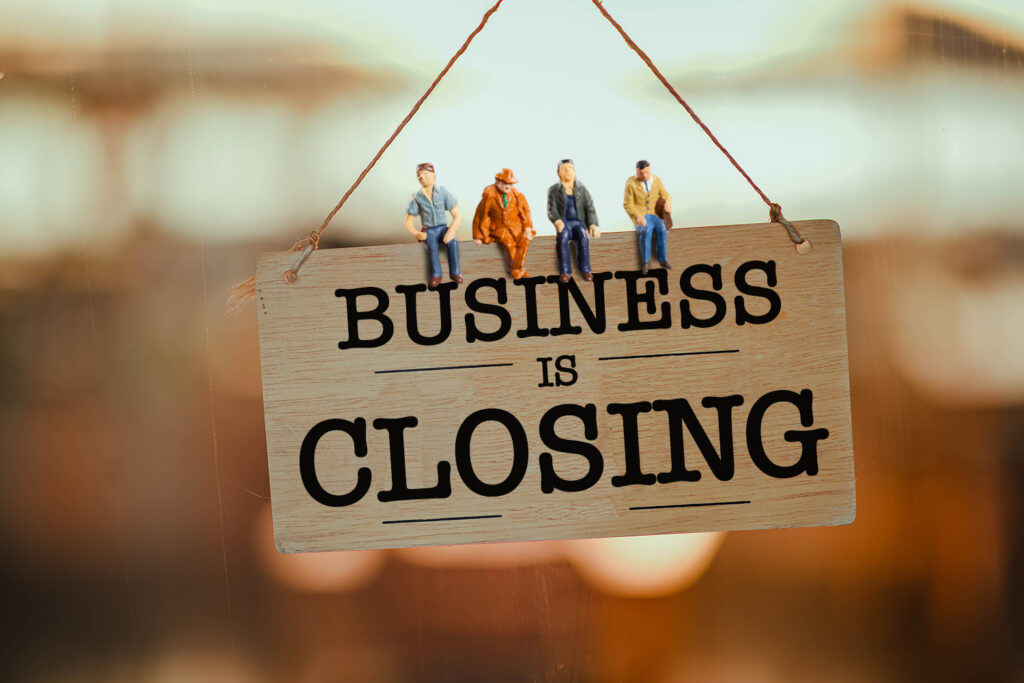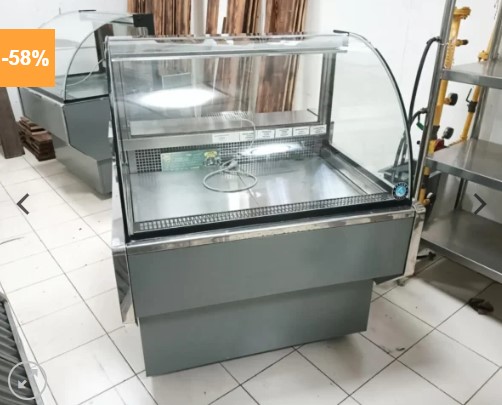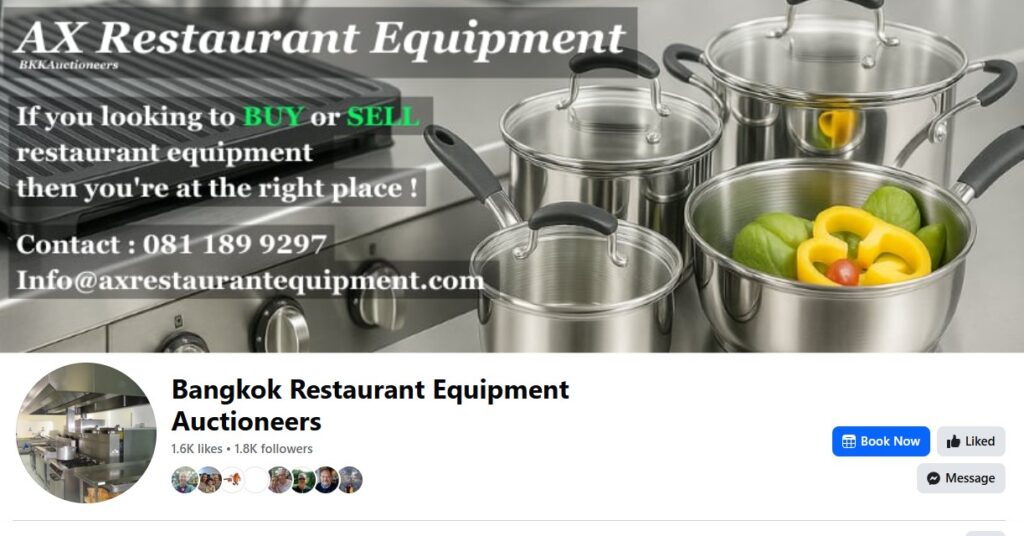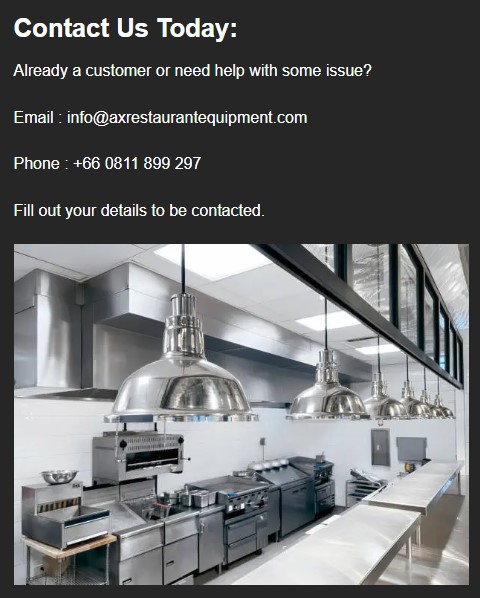Opening a restaurant in Thailand—especially in Bangkok—can be an exciting venture, but it’s also fraught with challenges. The city’s vibrant food scene is highly competitive, and many new eateries fail within their first two years. In fact, industry experts estimate that 60% of new restaurants in Bangkok close within their first year, with many more struggling to survive beyond that.
At AX Restaurant Equipment Bangkok, we’ve seen countless restaurateurs make the same costly mistakes. From poor financial planning to underestimate the importance of local expertise, these missteps can doom a business before it even gets off the ground.
Here are the top 5 mistakes people make when opening a new restaurant in Thailand—and how you can avoid them.

1. Underestimating the Competition & Market Saturation
Bangkok’s restaurant scene is booming, but it’s also overcrowded. Every week, new eateries open with grand launch parties, only to quietly shut down months later. Many entrepreneurs enter the market without researching:
– Copycat concepts – Too many restaurants serve the same dishes (pad Thai, green curry, etc.) without differentiation.
– Ignoring niche demand – Instead of offering something unique, many owners replicate existing trends, leading to fierce price wars.
– Overestimating tourist demand – While tourism is recovering, relying solely on foreign customers is risky. Locals make up a significant portion of repeat business.
Solution: Conduct thorough market research. Identify gaps—perhaps a regional Thai cuisine specialty or a fusion concept—and tailor your menu to stand out.
2. Lack of Local Knowledge & F&B Experience
Many failed restaurants are opened by people with zero hospitality experience, assuming that “good food” alone guarantees success. However, Thailand’s F&B industry has unique challenges:
– Regulations & permits – Navigating Thai business laws, food safety standards, and labor rules requires local expertise.
– Supply chain & ingredient sourcing – Knowing where to get the freshest, most affordable ingredients is crucial.
– Cultural preferences – Thai diners value flavor, affordability, and speed. A slow, expensive, or overly westernized concept may struggle.

Solution: Partner with local consultants or hire experienced Thai managers who understand the market. Programs like the Taste of Thailand Tour offer training on F&B standards and sustainability practices.
3. Overspending on Brand-New Equipment
One of the biggest financial mistakes new restaurant owners make is buying all-new kitchen appliances and furniture. While shiny new equipment is tempting, it’s also a massive drain on capital—funds that could be better spent on marketing, staff training, or emergency reserves.
Why Buying Nearly New Equipment is Smarter
– Cost savings – A brand-new commercial fridge might cost $5,000, while a high-quality used one in excellent condition can be found for $1,500 or less.

– Depreciation – New equipment loses 20-30% of its value in the first year alone. Used gear has already undergone most of its depreciation.
– Same performance – Reputable brands like Vulcan, Garland, and Hoshizaki last for years. Many used appliances are barely a year old, often from restaurants that closed quickly.
– Faster ROI – Lower upfront costs mean you break even sooner and can reinvest profits into growth.
Solution: Work with trusted used restaurant equipment suppliers (like AX Restaurant Equipment Bangkok) who inspect, refurbish, and sometimes even warranty pre-owned appliances.
4. Poor Financial Planning & Cash Flow Management
Many restaurateurs underestimate costs and overestimate early revenue, leading to cash crunches. Common financial pitfalls include:
– Under budgeting for rent & utilities – Bangkok’s commercial rents can be steep, and electricity costs for commercial kitchens are high.
– Ignoring seasonal fluctuations – Tourist-heavy areas may boom in high season but struggle in low seasons.
– Overstaffing too soon – Hiring a full team before establishing steady sales burns through capital.
Solution:
– Start lean – Begin with a smaller team and expand as revenue grows.
– Track every expense – Use accounting software to monitor cash flow in real time.
– Have a 6-month emergency fund – Many restaurants fail simply because they run out of operating cash before gaining traction.
5. Neglecting Marketing & Customer Retention
A loud opening party might generate buzz, but sustaining customer interest is harder. Many restaurants rely solely on:
– Social media hype – Posts fade quickly if not consistently reinforced.

– Food delivery apps – While useful, they take 20-30% commissions, squeezing margins.
– Ignoring repeat customers – Loyalty programs and personalized service keep diners coming back.
Solution:
– Build a strong brand – Invest in professional branding, a user-friendly website, and engaging content.
– Leverage local influencers – Food bloggers and micro-influencers can drive traffic at lower costs than traditional ads.
– Focus on word-of-mouth – Thai diners trust recommendations from friends and family more than ads.
Final Thoughts: How to Succeed in Bangkok’s Tough Restaurant Scene
Opening a restaurant in Thailand is not for the faint-hearted, but with the right strategy, it can be incredibly rewarding. To recap:
Differentiate your concept – Don’t just copy what’s already out there.
Leverage local expertise – Partner with Thai F&B professionals.
Buy nearly new equipment – Save thousands and get the same quality.
Manage finances carefully – Avoid overspending and plan for lean periods.
Invest in long-term marketing – Don’t rely solely on opening hype.
At AX Restaurant Equipment Bangkok, we help new restaurateurs save money on high-quality used kitchen appliances, so they can allocate funds where they matter most. If you’re opening a restaurant in Thailand, avoid these mistakes—and give yourself the best chance of success.
Need reliable, nearly new restaurant equipment? Contact us today—we’ll help you build your dream kitchen without breaking the bank.



